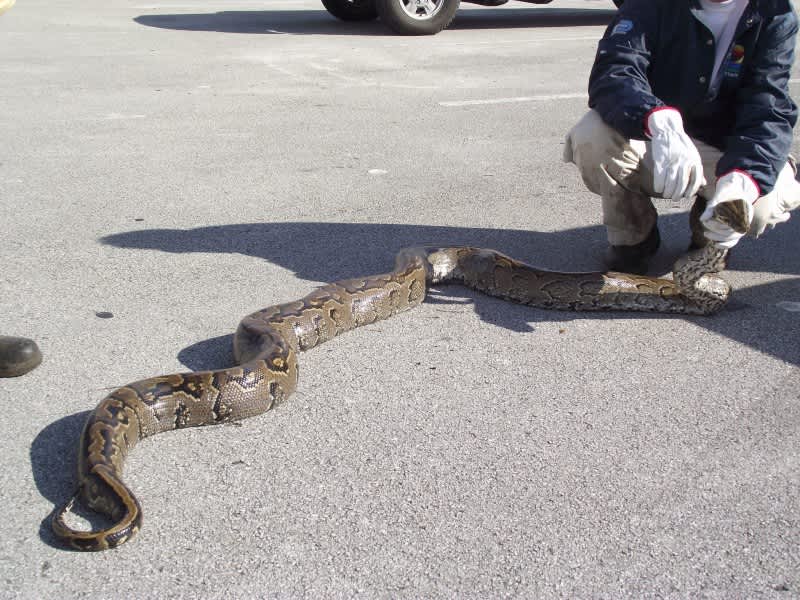Florida Officials to Hunt Down Northern African Pythons
OutdoorHub Reporters 02.02.15

In its native environment, the Northern African python preys on antelopes, wild pigs, and even domesticated goats. In Florida, however, this invasive species dines on just about anything it can wrap its body around. The Florida Fish and Wildlife Conservation Commission (FWC) announced earlier this week that it will be moving to exterminate the species from the region. Unlike the much more entrenched Burmese python, Northern African pythons are far fewer in number and only reside in one Florida County.
“Focused efforts by the FWC and partners to locate and remove these invasive snakes could prevent the spread of this species into natural areas and inform management actions to address the Burmese python population,” said FWC biologist Jenny Ketterlin Eckles in a press release.
Northern African pythons, also known as rock pythons, are some of the largest snakes in the world. In Africa, the snake is widely feared and has a reputation as a man-killer, even though the pythons very rarely attack humans. Like the Burmese python, rock pythons can grow up to extraordinary lengths and some snakes up to 20 feet in length have been captured. In 2013, FWC officials captured a 10-foot, 36 pound specimen in Miami-Dade County after the creature consumed a family’s beloved Siberian husky. Rock pythons are also a problem for wildlife, and much like their Burmese cousins, these snakes have few predators in Florida.
“We think they’re confined to a small area, so we are increasing our efforts in hopes that we can eradicate them,” Eckles told The Sun-Sentinel.
Biologists believe the number of rock pythons living in Florida is relatively small, which makes it possible for the FWC to eliminate the population entirely. Finding the creatures, however, is proving to be difficult. A FWC team spent Thursday searching for pythons near Everglades National Park, but found no indication of any snakes. According to biologists this is may indicate that the rock pythons are disappearing on their own.
“Last year, we only found one, so we’re hopeful,” Eckles recalled. “We don’t think they’re completely gone from the area. It’s going to take a lot of surveys finding none before we can say we’re successful.”
The National Park Service, US Fish and Wildlife Service, US Geological Survey, and local agencies are also taking part in the effort.

